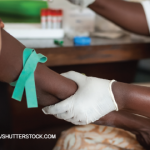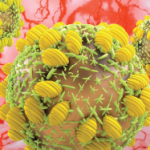Updates from the ACR Convergence 2023 Review Course, part 8
SAN DIEGO—The pre-conference Review Course at ACR Convergence 2023, held Saturday, Nov. 11, and moderated by Noelle Rolle, MBBS, assistant professor in the Division of Rheumatology, associate program director of the Rheumatology Fellowship at the Medical College of Georgia, Augusta University, and Julia Schwartzmann-Morris, MD, associate professor, Donald and Barbara Zucker School of Medicine at Hofstra/Northwell, Great Neck, N.Y., tackled numerous important topics in rheumatology. Here, we report on the presentation by Leonard Calabrese, DO, vice chair of the Cleveland Clinic’s Department of Rheumatic and Immunologic Diseases and director of the Cleveland Clinic’s RJ Fasenmyer Center for Clinical Immunology, Cleveland.
Dr. Calabrese spoke about the intersection of viral infections and rheumatic diseases. Viral infections are a common cause of acute arthritis and, in general, tend to be short lived and are not usually associated with significant articular inflammation. Due to the prevalence of various viral infections across the globe, any patient with signs of early inflammatory arthritis (i.e., symptoms that have not yet lasted six weeks) should be evaluated for a possible infectious etiology.

Dr. Calabrese
Parvovirus B19 infection in children commonly results in a slapped cheek rash, and a minority of pediatric patients have joint swelling. In adults, Parvovirus B19 infection may not cause a rash, or the rash can be atypical, and these patients commonly experience arthritis, which is more often polyarticular rather than migratory. The synovitis associated with this infection is minimal and is typically transient, lasting one to two weeks. Patients with this infection can also experience other manifestations, such as small vessel vasculitis and anemia, and patients can even generate autoantibodies seen in rheumatic conditions. Thus, in patients with an acute inflammatory arthritis, consider parvovirus B19 infection as a possible cause, even when autoantibodies are present.
Location Specific
Dr. Calabrese noted that, in individuals with arthritis after returning from travel (especially to foreign or exotic locations), the rheumatologist must consider the possibility of various bacterial, parasitic or viral infections. Included in this evaluation should be pathogens that can cause sexually transmitted infections. The assessment for specific pathogens should be based on geographic areas of travel and the epidemiology of certain organisms in those areas.
Chikungunya virus is of particular interest because nearly all patients will be symptomatic after infection, with symptoms that can include fever, myalgias and intense arthralgias. The condition is self-limiting in most patients, but a second phase of the illness can sometimes occur and last for several months.
Tenosynovitis can be seen in patients with Chikungunya infection, and about 5% of patients will experience symptoms that technically meet criteria for an autoimmune inflammatory arthritis, with a pattern most often looking like that of rheumatoid arthritis. In patients being evaluated for Chikungunya, clinicians should also consider the possibility of Zika and Dengue; this is specifically true for travelers to the Caribbean, South America and Southeast Asia.
Hepatitis
Dr. Calabrese moved on to describe how the discovery of hepatitis C virus (HCV) in 1989 changed the world of medicine. With regard to rheumatology, the discovery helped explain the cause of cryoglobulinemia in a large number of patients.
Keep the following in mind when evaluating patients for HCV:
- Patients being screened for HCV should also be evaluated for hepatitis B infection (HBV);
- All patients who are positive for HCV antibodies should be referred for HCV RNA testing via a Nucleic Acid Test (NAT) or Nucleic Acid Amplification Test (NAAT); and
- All patients with HCV should be treated to cure the disease.
With regard to the other most important form of viral hepatitis—HBV—there are about 300 million people worldwide living with chronic HBV infection. Screening for HBV is essential in the world of rheumatology because a risk of reactivation exists when patients are treated with immunosuppression, and this process of reactivation is preventable.
Screening for HBV can also indicate which patients should be referred for vaccination against HBV. The three tests that are important for screening include HBV core antibody, HBV surface antibody and HBV surface antigen testing. Proper interpretation of these lab results is essential for protecting patients, and an infectious disease specialist should be involved if questions arise.
HIV
Finally, Dr. Calabrese discussed human immunodeficiency virus (HIV), which previously was a major cause of mortality and morbidity but has been revolutionized by the advent of highly active anti-retroviral therapy (HAART). Some musculoskeletal and rheumatologic issues can still arise in patients with HIV, such as avascular necrosis, osteoporosis and immune reconstitution inflammatory syndrome (IRIS). In terms of reactive arthritis in patients with HIV infection, Dr. Calabrese noted that sacroiliitis and axial disease are uncommon, but psoriasis and psoriatic arthritis features can develop in patients.
 Jason Liebowitz, MD, is an assistant professor of medicine in the Division of Rheumatology at Columbia University Vagelos College of Physicians and Surgeons, New York.
Jason Liebowitz, MD, is an assistant professor of medicine in the Division of Rheumatology at Columbia University Vagelos College of Physicians and Surgeons, New York.

